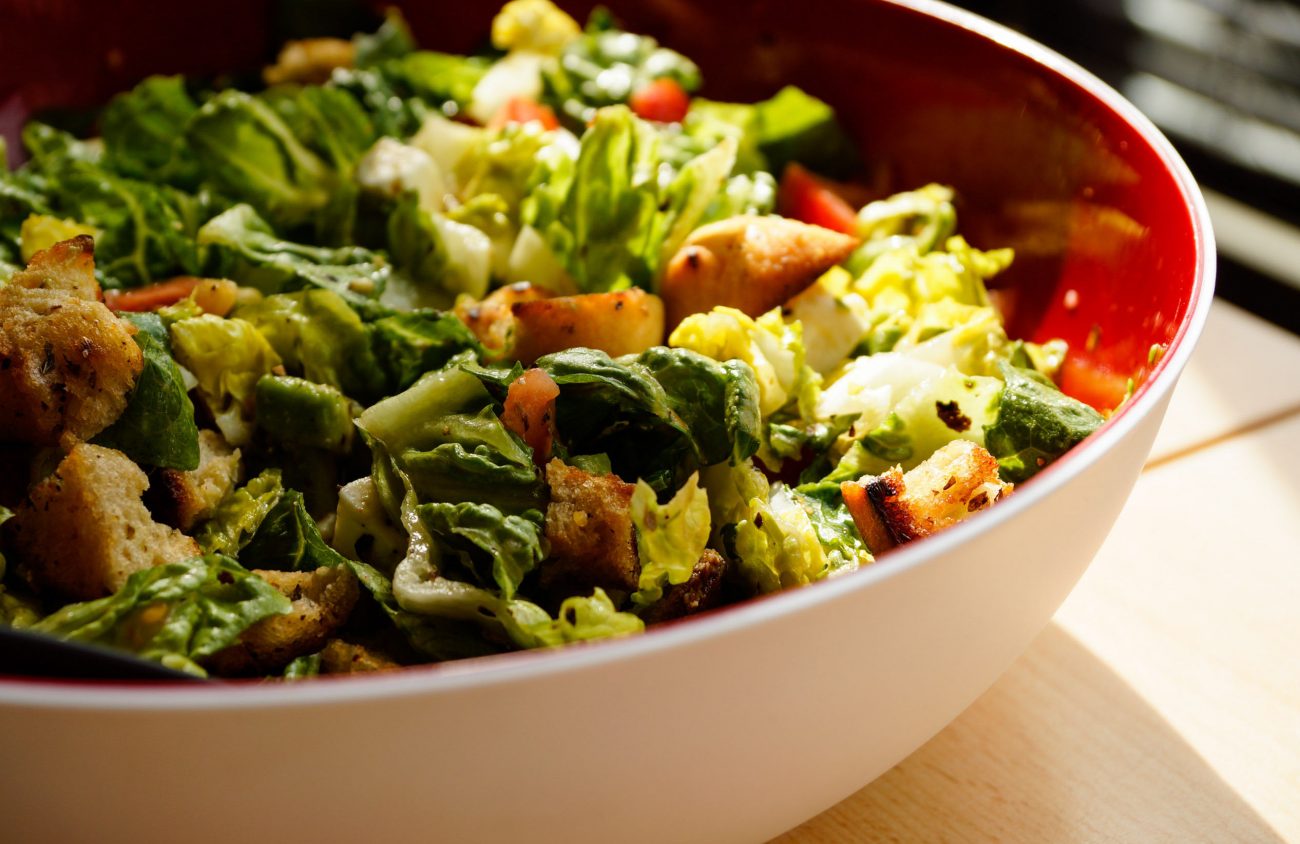Years ago a chiropractor who was into nutrition told me that salads should be composed of at least nine ingredients.
Or was it seven? Plain old lettuce wouldn’t cut it, health-wise. Although he didn’t say so, the more varied and colorful your food, the more nutritious it is. Plant pigments such as carotenoids and anthocyanins that provide shades of yellow, red and blue in leaves, flowers and fruit are good for you!
Besides promoting healthy growth and development, they reduce inflammation, maintain eye health, protect skin from UV damage, boost immunity and protect against cancer.
Lettuce and mustard varieties come in shades of red as well as green. Red-veined sorrel, orach, amaranth, purple basil, radicchio and red cabbage (thinly sliced) can all go into salad. The pale interior leaves of escarole make a striking contrast with super dark (and super healthy) leaves like arugula and kale. A topping of distinctive wild leaves can add visual interest and extra nutrients: miner’s lettuce, chickweed tips, even peppery bittercress.
Rosalind Creasy suggests shredding brightly colored chard stems crosswise and sprinkling them over a salad as a final touch. Radishes add color too, as do shredded carrot and beets, raw or cooked.
Don’t stop there. Flowers are not only colorful, fun and appetizing. They, too, contain those healthful pigments, albeit in modest amounts. Every little bit helps, and flowers are such a pretty addition to the meal.
There are probably hundreds of edible flowers, but “edible” does not always mean “palatable,” so do taste tests. And, of course, only eat flowers you have grown yourself, or that came from someone who you know grows pesticide-free.
Other caveats? Some sources advise removing the sepals of all flowers except violas, Johnny-jump-ups and pansies. Some people suggest removing stamens (for pollen allergies — though that seems a bit extreme).
One caution is worth mentioning: While the flowers of edible peas are safe and delicious, sweet pea flowers are mildly poisonous.
Random wanderings on the internet also revealed this: Only the petals of some flowers such as rose, calendula, tulip, chrysanthemum, yucca and lavender are edible. Yucca? Tulip? It never occurred to me to try. I also never thought of eating geranium (Pelargonium) flowers. It seems that their flavors reflect the diversity of scents found in scented geraniums: nutmeg, ginger, lemon, chocolate and peppermint.
Classic, widely taste-tested edible flowers include pansies and violets, bright orange and yellow calendula petals, borage and nasturtiums. Nasturtiums, my personal favorite, self-sow around the vegetable patch. They make a spectacular statement on a salad, and they taste delicious: spicy-sweet, not as hot as the leaves and unripe seeds (which are also good in salads).
Vegetable flowers are safe to eat. Letting a few plants grow on to flower is not only great for pollinators, it also gives you a source of edible flowers — I particularly like the cream-colored flowers of arugula, the large-leafed kind. The bright yellow flowers of kale are good, too.
The flowers of all culinary herbs can be eaten, and they tend to taste like a milder version of the herb’s leaves. Rosemary flowers are among the few that are available in winter. Insects adore umbellifers such as parsley, chervil and cilantro, and you can eat the flowers.
Same goes for chives. I like to tear the little purple heads into small clumps of florets to sprinkle on a salad, and of course whole heads are good for garnish.
The flowers of anise hyssop do, apparently, have a mild anise flavor. As a kid I used to enjoy the flowers of bee balm (monarda, also known as bergamot), and I remember them as full of nectar and quite sweet, like honeysuckle flowers. Perennial plants like these can be included in flower borders near your vegetable or herb garden, doing double duty as pollinator plants and a source of edible flowers.
Then there’s fruit. One kind or another is available all year round. Blueberries are wonderful in salads. Other favorites at our house are figs and pears. Firm, under-ripe pears (like boscs, which I discovered can be eaten with pleasure at virtually any level of hardness) can be julienned, and they look very decorative that way.
In winter we also use sliced oranges and occasionally kiwis and, of course, those crunchy pomegranate seeds. ■
Rachel Foster lives and gardens in Eugene. She can be reached at rfoster@efn.org. The book that turned her on to salads years ago is still available: The Edible Salad Garden by Rosalind Creasy.
